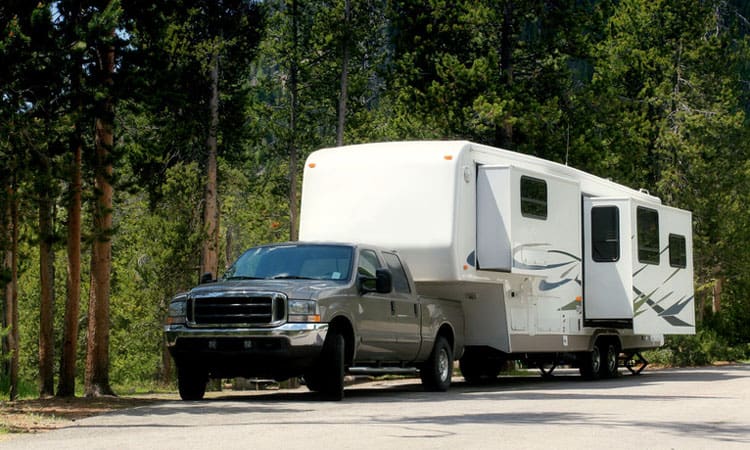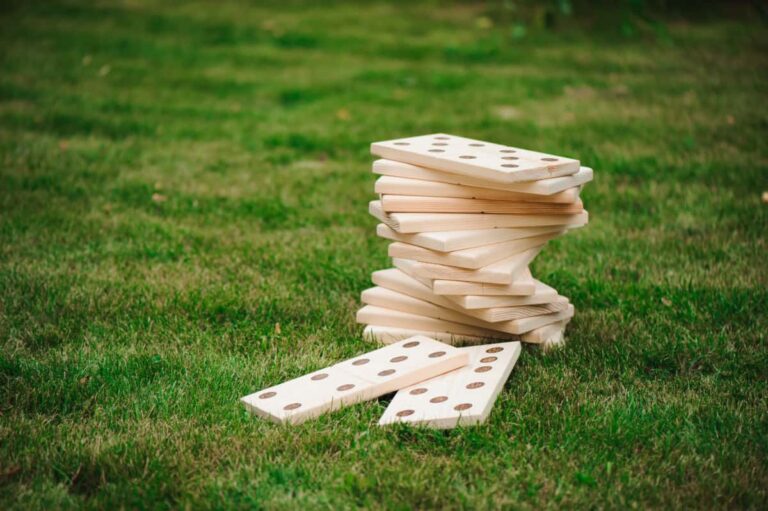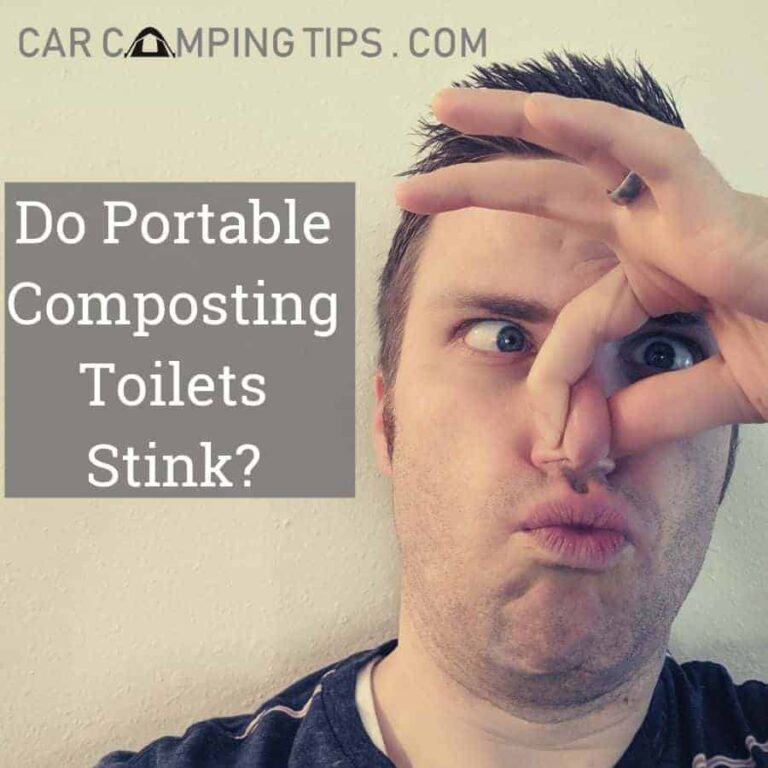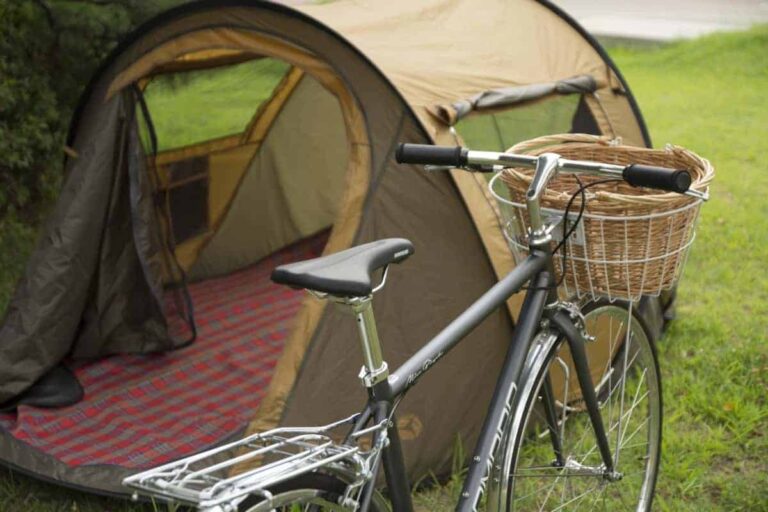How to Make a Portable Composting Toilet: The Basics
The more you can do to keep the beautiful landscapes we all enjoy just as beautiful after you leave them, the better. Composting toilets are yet another wonderful way for campers to be more considerate of their environment.
Composting toilets are a simple way to do a whole lot of good for our environment. All it takes are two buckets, toilet paper, plenty of carbon-based materials (leaves and sticks), and hand sanitizer. You could also use another container for wastewater, but this is not completely necessary.
Leave No Trace
Composting toilets may become more and more necessary as parks and protected areas have more people coming to enjoy them. According to the Center for Outdoor Ethics, packing out (which basically means the removal of) “human waste is likely to become a more common practice to ensure the long-term sustainability of our shared lands. In some environments, particularly in fragile alpine settings, land managers may require that all solid human waste must be packed out”.
Not only is the usage of composting toilets more eco-friendly for yourself, but it is also becoming necessary for the betterment and preservation of the areas and lands we campers love so much.
What Are Composting Toilets?
Composting toilets use the natural processes of decomposition and evaporation to recycle human waste (Link). Most composting toilets use little to no water for flushing, and are called “dry toilets”. Human waste is a nitrogen-based material (these are called Greens), so many designs of composting toilets have carbon additives (these are called Browns) such as peat moss and coconut coir.
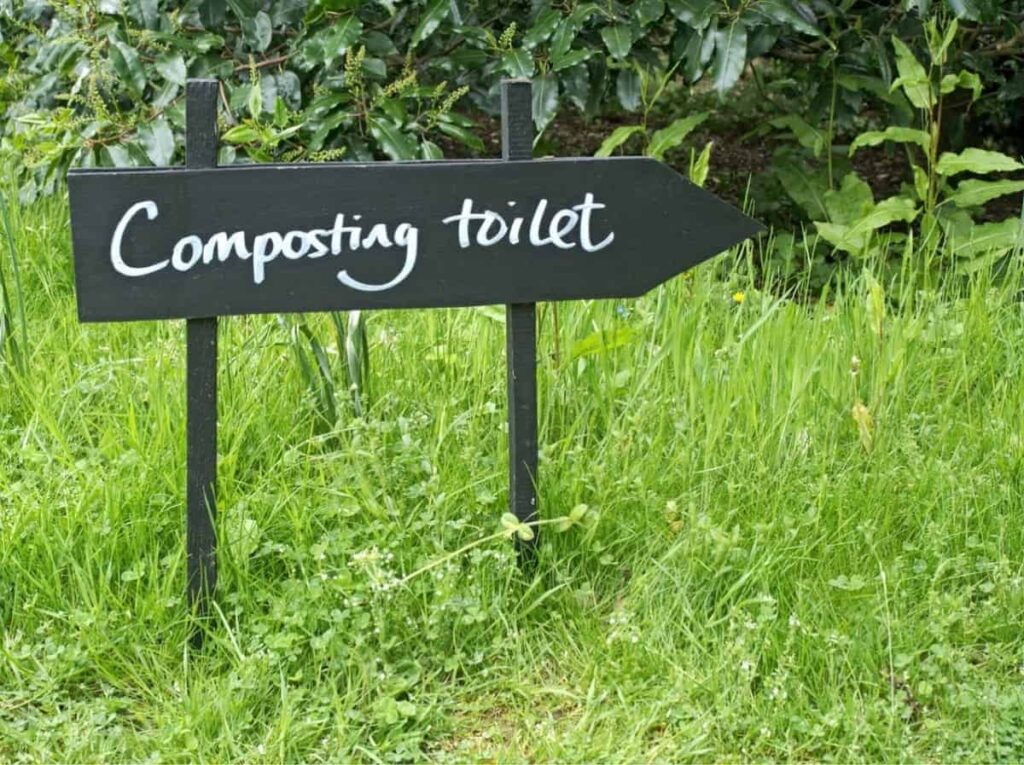
Reaching a good measure between Greens and Browns will eliminate most odors and create a good environment for microorganisms to break down the materials to create a rich, hummus-like fertilizer that can be used to enrich the soil. If we have any readers who are into gardening, your ears might have just perked up! You can use this in your own garden as well, just be sure to check with local regulations before you, well… you know.
When this waste is composted completely, most of the water will have evaporated into the atmosphere. Most systems separate liquid waste from solid waste, which speeds up the composting process as well as minimizes the admission of odor (this is obviously extremely important in portable varieties). Later we will discuss options with having a separate container for wastewater.
Why Use Composting Toilets?
Compostable material makes up about a quarter of the mass in any given landfill. This material can be used in an environmentally-helpful method that is also helpful for anyone with a passion for gardening. These toilets do not need a connection to sewer systems or septic tanks, and this will save the user 100s of dollars in water costs annually, as well as save 1,000s of gallons of water. As the average person flushes about five times a day, toilets can make up to about 30% of overall household water consumption every year (Link).

A warning, though. Pathogens from feces can last a long time–for this reason, many people who compost their human waste choose to only use the “night soil” to fertilize their trees, flowers and other non-edibles. If you want to see just how long pathogens can survive in feces, check out our post here.
How to Make a Composting Toilet
It is actually not too complicated to create your own composting toilet with a few basic materials that you can find fairly easily. All you need are two or three buckets with very tight coverings, toilet paper, and some sort of comfortable material to put around the actual toilet. Having rubber gloves as well as hand sanitizer is not necessary, but extremely recommended.
One bucket can be used for the actual toilet where you can deposit solid waste and liquid waste. Putting solid and liquid waste in the same bucket will make the toilet much wetter than before and will force you to add much more carbon-based materials to balance out the extra wet nitrogen. You can also deposit wastewater anywhere that is 200 feet away from any available water source.
If you choose, you can have a second waste bucket for urine. Separating the urine and feces makes the composting process go a lot faster.
The second (or third) bucket is for you to collect something known as “duff”, “browns”, or carbon-based material. Duff is basically any collection of leaves and sticks you can find in any forest that you can use to pack into a compost toilet to add an appropriate amount of dry, carbon material. Add duff after every time you use the toilet, and once the waste bucket gets close to full you can dump it in a nearby compost pile or bury it in a designated area. Make sure to get toilet paper that is eco-friendly and has no dye, so as to make the composting process all the more safe for the environment.
What Are Good Examples of Carbon-Based Materials?
To balance out the nitrogen-heavy material of human-feces, you need to add carbon-based materials. This will speed along the composting process as well as get ready for most of the potential smell. Here is a list of materials you can use (Link)
- Fall Leaves
- Sawdust
- Straw
- Paper
- Dryer Lint
- Cotton
- Sticks
- Bark
- Pine Needles
Which Composting Toilets to Buy
While some composting toilets install right into your house and cost around $1,000 (Amazon), portable models are much more affordable. This is because you are able to bypass all of the installations that come along with permanent toilets, not to mention all the savings in water costs over the years. With portable toilets, you have much more freedom, but you have to be careful with handling them of course. Here are a couple that I have found:
The truth is that there isn’t a “portable composting toilet” that’s for sale in the market at the time of this writing. Portable toilets have been a thing for a while, but if you want to compost, you’re on your own for a DIY solution.
Reliance Control Corporation Luggable Loo Portable 5 Gallon Toilet (Amazon)
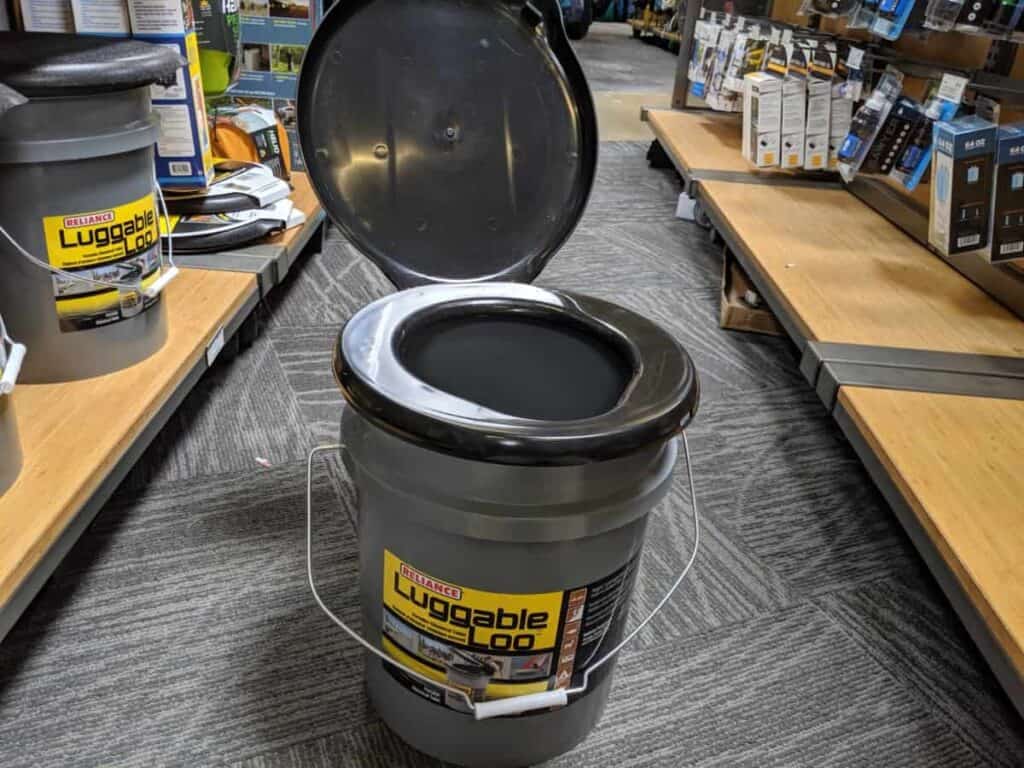
This is a much simpler design for a much more affordable price of $20. It weighs in at about 5 lbs and is basically a pre-made DIY toilet with a better seal on the top of the bucket. This toilet is a safe bet for those in a larger car that has room to bring with them. This is a true dry toilet because you are virtually using zero water. You can use this for composting by putting in the composting materials, yourself. The lid even acts as a backrest so it is very comfortable and handy. If you have a good amount of carbon-based materials around you to put in this bucket you should be good to go!
Portable Toilet Bags – Compostable Portable Toilet Liner Bags by Dry John (Amazon)
An interesting choice for around $27. This is not a true composting toilet but it comes with compostable toilet bags attached to a portable lid. The bags are biodegradable so if you are willing to dig a trench far away from any water source this could be a good one for you. Very simple and easy to use. The only problem that you could come into contact with is figuring out how to sit down and use this toilet. Take a look at the model and see what you think and if this could be something useful for you.
For ultralight campers and backpackers, this may or may not be a helpful choice for you, depending on your personal preference.
Do Composting Toilets Smell?
If used properly, they will not smell. At the very least the units could smell slightly earthy, like that of an actual composting pile. The first thing to remember with composting toilets is to add enough “Brown” material (meaning carbon-material and not “Green” nitrogen-rich poop, funnily enough) to balance out your deposits. This, as we have discussed earlier, is a collection of sawdust, twigs, wood chips, etc. The second thing to keep in mind is to separate your wastewater from solid waste. You can have another jug for this purpose or you could pee somewhere 200 feet away from a water source, as per the Leave No Trace Principles.
There’s a lot that goes into whether a composting toilet will stink or not–check out our article that goes in-depth into the subject, here!
Conclusion
It is fairly easy to create your own composting toilet at home, and it is also cost-effective to buy one because of the massive potential savings from water-usage (that is to say that you might be considering to use this toilet more than just on camping trips). Learning about composting is certainly an under-appreciated skill that many people don’t even bat an eye at, but the environmental impact able to take place when a community of people decides that they want to do something for their surroundings is incalculable.
If you are looking into an option to do your part for the environment in a creative way, consider getting a composting toilet. This will be for your benefit, as well as the benefit of many others after you.

